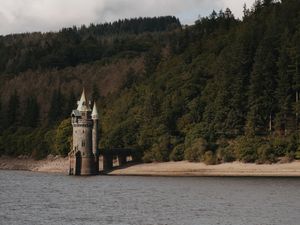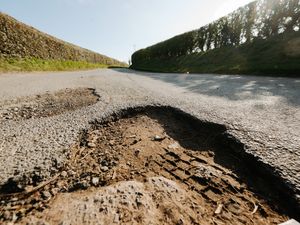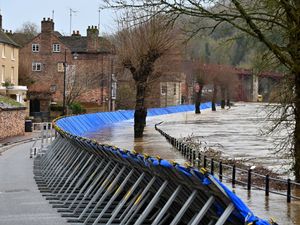Water from Lake Vyrnwy and the River Severn could be piped to London to help with drought
Water from the River Severn and Lake Vyrnwy could be piped all the way to London to tackle shortages.

The Thames Water plan would see water from Lake Vyrnwy, which is currently used by United Utilities to supply Liverpool, piped into the River Severn, then to the South East of England.
A document outlining the proposal says the 'Severn to Thames Transfer' would be used in cases of drought in the South East.
The plan, which is part of a consultation being run by Thames Water on future supply for the region, says it would work either by building a new pipeline – or using restored canals.
Thames water says work is ongoing to allow the plan to proceed "if required".
A report outlining the long-term timescale of the plan states: "Planning consent for construction is planned by 2040 with water available from 2050 in a phased manner. The scheme would supply water for Affinity Water, Southern Water and Thames Water customers."
Severn Trent has confirmed it is looking at options for future water supply alongside Hafren Dyfrdwy – but said no options are certain.
A spokesman said: “As required by legislation, and to address the challenges of population growth right across the UK, Severn Trent and Wrexham-based Hafren Dyfrdwy are exploring many options to meet water demand from 2050 and beyond.
"All options being explored are currently proposals, none are certain."
The Thames Water consultation says the water would "be moved from the River Severn to the River Thames either by a new pipeline or by a combination of new pipeline and restoring the Cotswold canals".
Thames Water says the proposals could be required as it forecasts needing an extra one billion litres of water every day for customers by 2075 – to accommodate both climate change and population growth.
The consultation from Thames Water explains how the water would be piped to Oxford.
It states: “The Severn to Thames Transfer (STT) would transfer water from the North West and Midlands to the South East for use during a drought.
“This water would come from the River Severn itself, with Severn Trent Water and United Utilities providing additional sources of water if needed.
“The water would then be moved from the River Severn to the River Thames either by a new pipeline or by a combination of new pipeline and restoring the Cotswold canals.
“Ongoing work is being undertaken to enable the scheme to proceed if it’s required.
“Planning consent for construction is planned by 2040 with water available from 2050 in a phased manner. The scheme would supply water for Affinity Water, Southern Water and Thames Water customers.”
One of the proposals would see water taken from the River Severn near Deerhurst in Gloucestershire for transfer via a new pipeline to Culham in Oxfordshire.
Thames Water has said that there are no plans to take any more water from Lake Vyrnwy than is currently taken by United Utilities.
That water would require a new pipeline to bypass the River Vyrnwy.
Severn Trent has confirmed it is in discussions over the plans – something it says it has a legal duty to do.
However, the company says that no final decisions have been made over any proposals.
A Severn Trent spokesman said: “As required by legislation, and to address the challenges of population growth right across the UK, Severn Trent and Wrexham-based Hafren Dyfrdwy are exploring many options to meet water demand from 2050 and beyond.
“All options being explored are currently proposals, none are certain.”
United Utilities currently takes water from Lake Vyrnwy and pipes it to serve customers living in Merseyside and Cheshire.
The Vyrnwy Dam was built by the Liverpool Corporation – with work starting in 1881, and finishing in 1888.
The lake was created by flooding the old village of Llanwddyn.
Last summer levels of drought were so severe that portions of the old village became visible for the first time in years.
Old stone walls, foundations, and the remnants of a bridge all emerged as the water levels dipped.
As well as the work to create the lake a pipeline was also created to allow water to be taken to its new destination in Merseyside.





